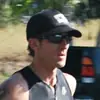After your post-workout snack immediately following the completion of your training, you now have a one-hour window to consume natural whole food. Aim for lean protein sources like eggs, chicken, fish or legumes and complex carbohydrates like quinoa, vegetables and fruit. And don't forget your healthy fats. Post workout is a time to nourish the body with omega 3 and 6 nutrients to repair muscle damage and decrease inflammation.
Component #2: Efficient Training
Training progressively and smart is a tactic many athletes do not follow. A randomized training schedule is the method most amateur endurance athletes tend to use. They train depending on what they want to do for that particular day. There isn't a plan of action, no progressive build up, no planned rest days and limited structured workouts.
These are strategies that must change in order to fully reach an ultimate performance level. The first step is setting up a structured training program that fits your needs and goals. Write down the top three objectives that you want to accomplish over the training period.
Examples:
- Get faster at the half marathon distance.
- Get stronger on the bike.
- Complete Ironman 70.3.
Having goals in place before you start a training plan will give you a target to shoot at instead of just guessing. When you start constructing your game plan, you must use these simple strategies:
Never increase volume more than 10 percent each week.
Every fourth week decrease your highest volume week by 40 percent. This is a recovery week and will allow your body to fully adapt to the training block.
You never want to have back-to-back training days that are both high intensity workouts. Stick to the "easy/hard/easy/hard" set up for your workouts.
Find your "A" race and plan your training backwards from the scheduled day to the present. This will allow your peak to happen for your most important race. Trying to peak for every race of the year will lead to lack of performance and ultimately injury.
Listen to your body. If your body is in a fatigue state and just can't get through a specific workout, call it a day. Recognize the difference between being a sissy and just having mental and physical fatigue.
You should implement a base phase to build your aerobic capacity, a build phase where you implement more race pace strategies, a peak phase where you are preparing for the demands of the race, a taper period where you allow for full recovery and adaptation from all of your training, and a transition period with time off to allow for full physical and mental regeneration. These periods will set you up for a successful training year.
Component #3: Recovery, Regeneration and Rest
The human body is very resilient and can take training loads at extreme rates. But the human body does break down and it's what you do during your recovery time that allows you to build and improve performance.
Pro Triathlete Kenny Rakestraw said, "When you get to high levels of fitness, it's not about putting in more time, we are all training high amounts of volume. It's the athletes that are focused on recovery that will reap the benefits of their training program."
During workouts, we break down muscle tissue, deplete our energy stores and we create nervous system fatigue. When our nervous system is fatigued it doesn't matter what we do for our training, we will not get better. We will be in a constant state of overtraining, causing compensation, breakdown and ultimately injury. You must plan and schedule rest days, rest weeks and transition periods into a training program.



